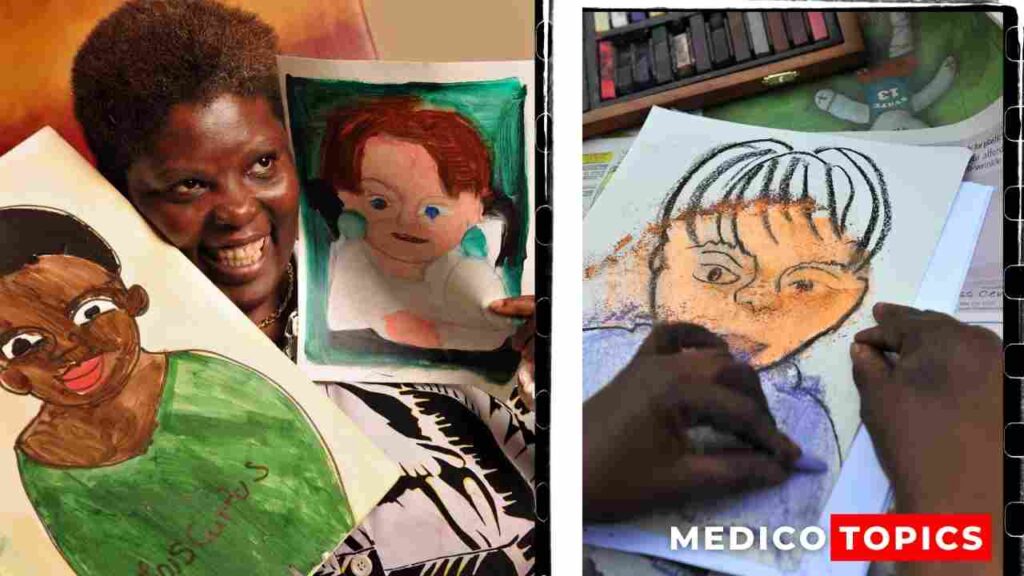
Artist And Disability Advocate Lois Curtis, who prevailed in a significant civil rights case for those with disabilities, died on November 3, Thursday. Let’s see how Lois Curtis died and Lois Curtis’s cause of death in detail.
Lois Curtis cause of death
Lois Curtis, 55, passed away on November 3, Thursday at her own home outside of Atlanta. Lois Curtis cause of death was pancreatic cancer.
Medico topics have been trying to reach out to the family and relatives for comment on the incident. So far no responses have been received. We will update the page once enough information is available. More information on Lois Curtis cause of death will be added soon.
The Lois Curtis story
According to Susan Jamieson, director of the Atlanta Legal Aid Society, who first encountered Lois in 1989, “Lois was born to a family that was unable to appropriately care for her given the behavioral supports that she needed and the anxieties that her mother had for her safety.”
Lois Curtis School life
“Lois struggled with school even though she loved being in school, due largely to behavior issues. At home, her mother was constantly calling 911 because Lois would wander off. She was extremely fearful for her daughter’s safety. Their neighborhood was not a safe place for a young girl to be out wandering around. When the police responded, Lois ended up either in jail or the mental hospital. She was in and out of the Georgia Regional Hospital’s child and adolescent unit from when she was eleven”, Jamieson continues.
In a video she made for the National Disability Rights Network in 2020, Curtis said: “My name is Lois Curtis… I’m glad to be free.”
Lois Curtis wanted a way out
“As we always say, ‘What is it you think we could do for you? I work at Legal Aid. And I’m a lawyer,” Jamieson provided her recollections for an interview for the Atlanta Legal Aid Society, where she works. “And she’d say: ‘Get me out of here. Would you please get me out of here? When am I getting out of here?”.
Lois Curtis, who was mentally ill and had an intellectual disability, regularly called Jamieson from the hospital to inquire about her release date.
Americans with Disabilities Act
The Americans with Disabilities Act gave Curtis, her co-plaintiff Elaine Wilson, and other disabled people the freedom to live in a “least restrictive setting,” the Supreme Court declared in a judgment written by Justice Ruth Bader Ginsburg in 1999.
People with disabilities and the elderly now have the option to receive long-term care services in their own homes rather than an institution like a nursing home or psychiatric hospital thanks to a historic civil rights decision.
Curtis created a change in the service system
The chief federal official in charge of aging and disability policy, Alison Barkoff, claims that Curtis “created a sea change in what our service systems look like.”
“We went from a system in 1999 that the only places that most people with disabilities and older adults could get services were in institutions like nursing homes and psychiatric hospitals, to systems that are primarily focused on supporting people with services in their own homes,” says Barkoff.
The Olmstead decision
State Medicaid budgets changed as a result of the Olmstead decision. More money is being spent on providing care at home. Less government money is used to pay for institutional care.
Countless cases seeking to extricate people from institutional care have invoked the Olmstead ruling. Also, its use has grown. Under the Obama Administration, the U.S. Department of Justice used the decision’s language that persons with disabilities are the right to live in a “least restrictive environment” to file a lawsuit to abolish segregated labor programs that pay individuals with disabilities less than the minimum wage. Parents now argue that integrated schools are best for their children by citing Olmstead.
In support of the Olmstead judgment, it was argued that people lead happier, more satisfying lives when they are fully incorporated into their communities.
Curtis proved it. She relocated into several homes, requiring caregiver assistance with caregiving tasks including cooking, shopping, and other duties. She also made the artistic discovery there, which she had missed out on while living in state facilities.
Girl in an Orange Dress
On the anniversary of the Olmstead decision in 2011, she received an invitation to the White House. She gave President Obama a framed photograph of “Girl in an Orange Dress.” Because she didn’t have any photos from the time she spent living in state mental facilities, Curtis created a series of self-portraits of herself as a young kid.
Artist Louis Curtis
Curtis created drawings of animals and flowers using pencil and pastels. Additionally, she occasionally sketched persons whose images she had seen in books and publications, such as a young Muhammad Ali in a shirtless pose or a somber Martin Luther King.

Lee Sanders, who at first was recruited to help Curtis get work and then became a friend, claims that Curtis used her artwork to network. In her essay, Sanders claimed that Curtis “created an artwork as she lived: Her lines drawn without hesitation, her colors bold and saturated, her images uncomplicated and spirited.”
With her quick smile and outgoing personality, Curtis was a natural at meeting friends. They assisted her in selling her artwork by buying the materials she needed.
She was surrounded by many of these friends when Curtis passed away on Thursday.
KEEP READING,
Who is Nancy Hauck? Meet the US mom who surrogate a child for her son
How did Nicole Josy die? Belgium singer cause of death & illness Explained
Follow us on Twitter for more updates.
Rohini (Editor) is a content writer with 3 years of experience in content writing. She joined Medico Topics on the Breaking News trainee scheme in 2022 and now works on MedicoTopics.com. She possesses a keen interest in political and entertainment matters, including the latest and most widely circulating celebrity rumors, and comprehensive resources on the wealth of renowned actors, athletes, players, and politicians around the globe.
Coverage: Obituary, Crime, Missing, Entertainment
